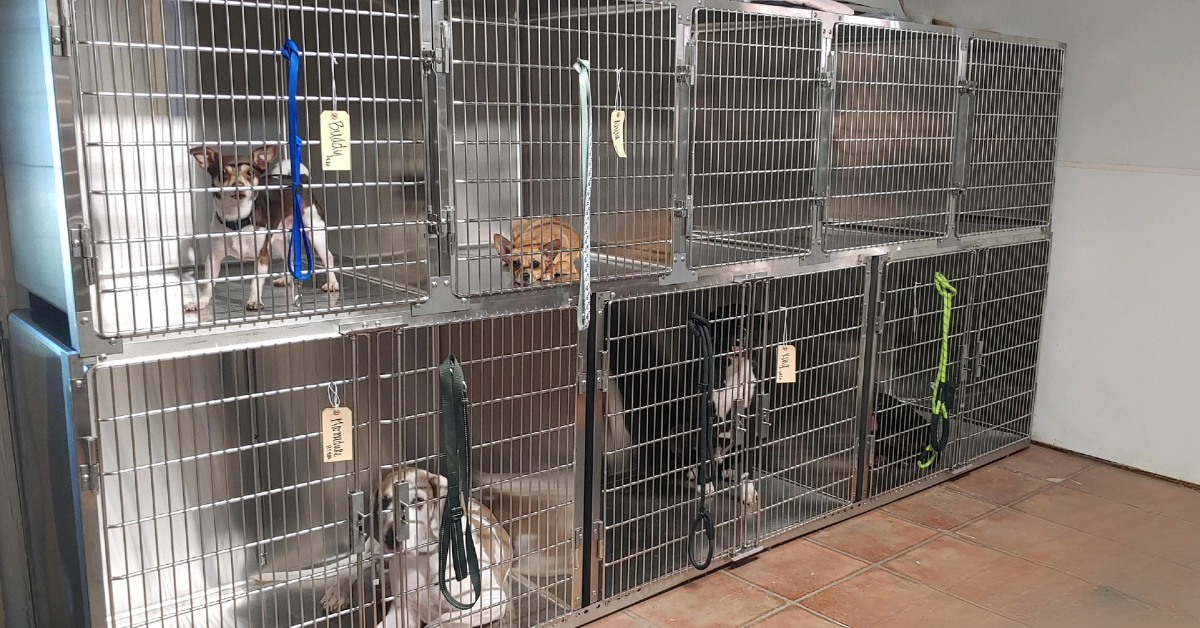The benefits of stainless steel cages in Veterinary clinics
Advantages of Stainless Steel Cages in Veterinary Clinics
Stainless steel cages are now being widely used in veterinary practices across the world. Stainless steel is an iron-based alloy that is well known for its resistance from rusting and corrosion.
Stainless steel cages have gained popularity over the years because of their ease of maintenance, along with their smart appearance. These types of cages can also be used to comfortably and securely accommodate many species including dogs, cats, and exotics.
Therefore, they can be incorporated into many different types of practices. The following points will discuss the benefits of stainless steel cages in veterinary clinics, and we’re going to really focus on the hygiene benefits.
The importance of hygiene
Infection control and hygiene are of great importance in veterinary practices. The main reasons that practices have strict hygiene protocols are to prevent the spread of zoonotic and contagious diseases between patients or from patients to staff and to reduce the risk of antibiotic resistance.
Good hygiene provides a line of defense against harmful organisms and standard operating procedures are in place to set these protocols.
Hospital-associated infections sadly occur in both veterinary and human medicine and control is based on hygiene and environmental factors.
In veterinary practices, the more common diseases that can be easily transmitted between ward patients include urinary tract infections, viruses such as parvovirus or calicivirus, and multi-factorial syndromes such as pneumonia, infectious diarrhea, and kennel cough.
In already very vulnerable patients contracting these diseases during a hospital stay can be detrimental to their health.
Stainless steel cages – the benefits
Easy to clean
Stainless steel cages encourage and allow a good level of hygiene in the patient wards.
As stainless steel is a highly durable material with high chemical resistance, it is able to withstand and handle a wide range of different types of cleaners and disinfectants, as well as repeated application of these.
Plastic kennels can be relatively easy to clean but are often less resilient at withstanding repeated disinfectant applications.
Wooden kennels are an even poorer disinfectant, with microscopic pores that allow pathogens to evade the surface clean, and trapping organic debris that can inactivate many disinfectant agents.
Remain clean
The smooth and bright surfaces of stainless steel also allow the surfaces to be virtually free from bacterial retention after cleaning.
This high level of cleanliness is why places such as restaurants and hospitals also utilize stainless steel surfaces throughout their businesses.
Smooth surfaces mean that it is less likely that cracks and crevices appear that can harbor dirt and bacteria.
Time saved
Furthermore, the easier that something is to clean the less time that it takes. This means that more time can be spent focusing on looking after your hospitalized patients and delivering gold-standard care.
Strong and durable
Additionally, stainless steel cages are also extremely secure and safe. This is a feature that is vitally important in Veterinary practices as nobody wants an escapee patient!
Stainless steel is hard-wearing, and it is therefore able to withstand a lot of force even from the strongest of dogs.
Its robust physical properties also mean that, once they are installed, they are likely to be used for many years without needing to be replaced.
Smart looks
How aesthetically pleasing something is definitely is an important factor when planning any workplace environment. Stainless steel cages do give a professional appearance and the shiny polished surfaces provide a beautiful finish.
Hygenic separation
Often stainless steel kennels are positioned side by side or are stacked which helps to prevent the transmission of airborne pathogens to the patient next door.
To conclude, stainless steel is now a popular choice of material for cages in many types of Veterinary practices. Not only does stainless steel provide patient security and safety, but it also maximises hygiene which greatly benefits the health of both the patients and the hardworking veterinary staff.






